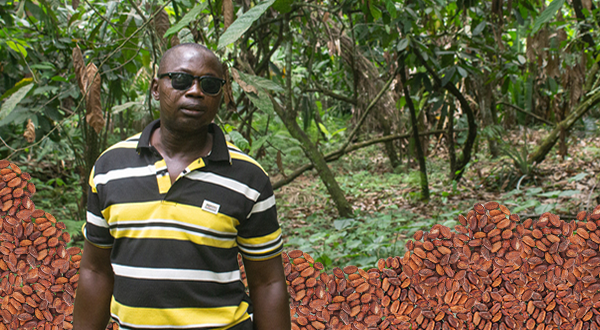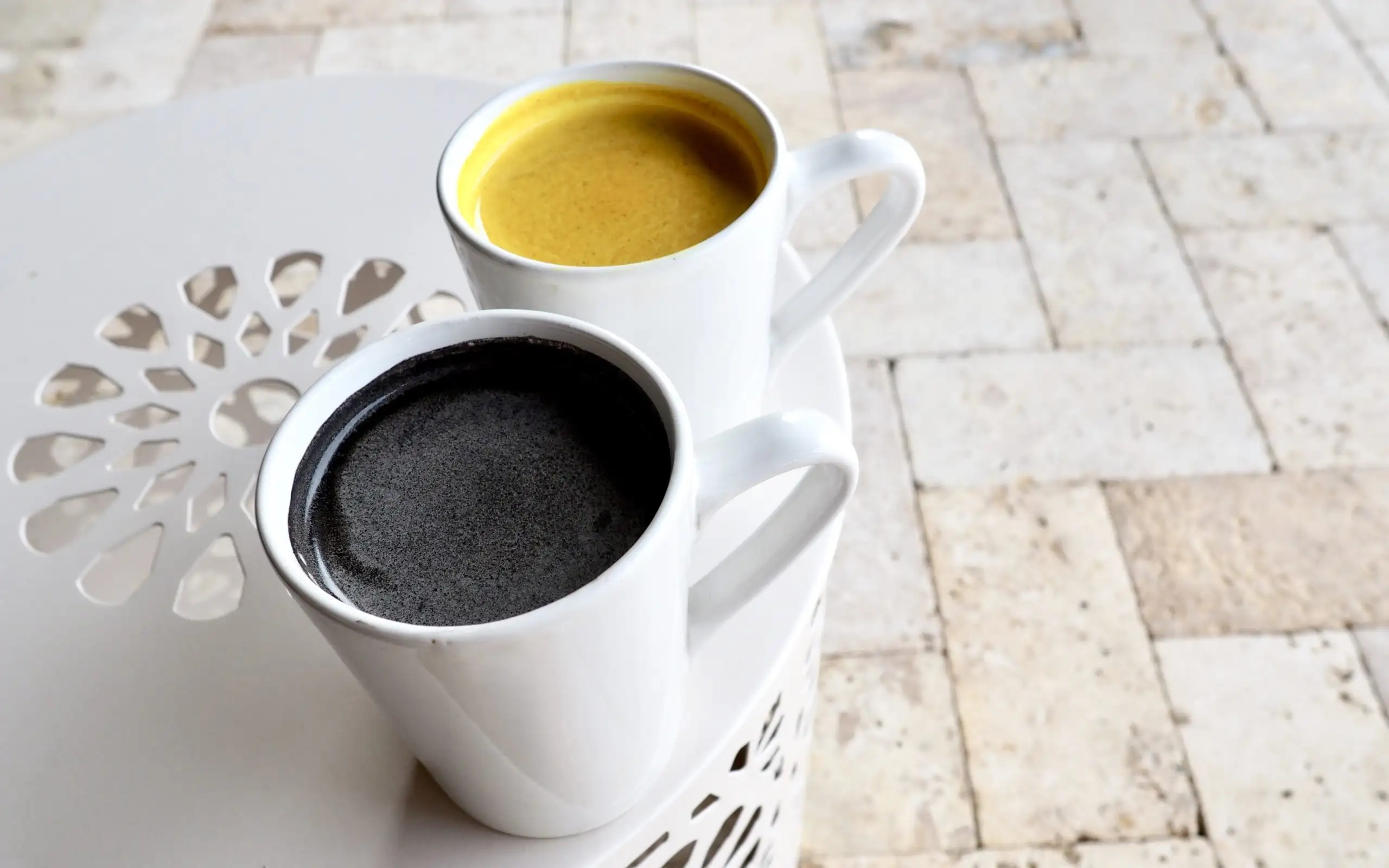Riding in the back seat of a crew-cab pickup truck, 67-year-old vanilla farmer José Cortéz peers down a narrow dirt road amid jungle-covered mountains in eastern Mexico, one of the most corrupt regions of North America.
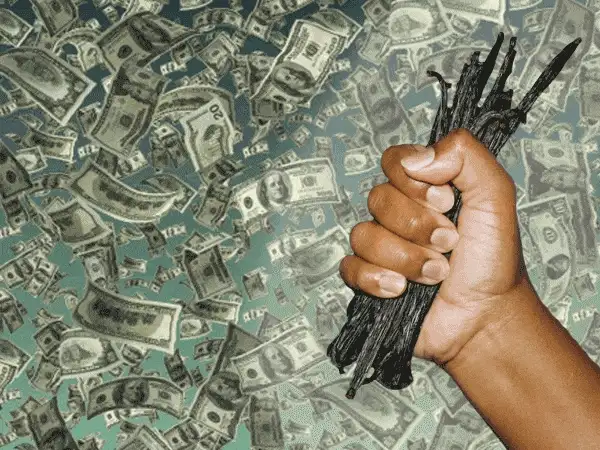
His vanilla farm, a 15-acre expanse just outside Papantla, Veracruz, is up ahead. He calls it his “edible forest.”
Papantla is the birthplace of vanilla, and Cortéz is part of a small community of farmers from the Totonaco indigenous group who have been cultivating and harvesting the majority of Mexico’s vanilla beans for hundreds of years — beans that some regard as the greatest in the world.
“The finest vanilla, the product with the best flavor…comes from Mexico,” wrote the historian Henry Bruman in 1948.
But the work, already cumbersome because of the difficulty of growing vanilla, now comes with added stress. Cortéz, who usually carries a machete when he visits his farmland, worries about jaguars, pumas, coyotes, and a local bird called the chachalaca destroying his crop. And then there’s the biggest threat of all: crime.
Cortéz has stumbled across armed men walking through the woods on his land. Every year, he hears about thefts of other farmers’ crops. He never hears about vanilla thieves being caught and prosecuted.
The justice system in Veracruz can’t be relied on to investigate, punish, or deter criminals, nor has the government launched a major campaign to boost the vanilla industry to help the sector match the recent success of export crops like raspberries and avocados.
That means the remaining practitioners of one of Mexico’s oldest agricultural traditions must fend for themselves. On a recent visit, Cortéz told us his method for protecting his harvest.
“Always bring a shotgun,” he said.
A dwindling market share
Cortéz, who’s been farming for 35 years — continuing a family tradition that goes back generations — tends some 10k plants here. That’s enough to produce 440-660 pounds of green vanilla beans (the crop that gets processed into vanilla) every year.
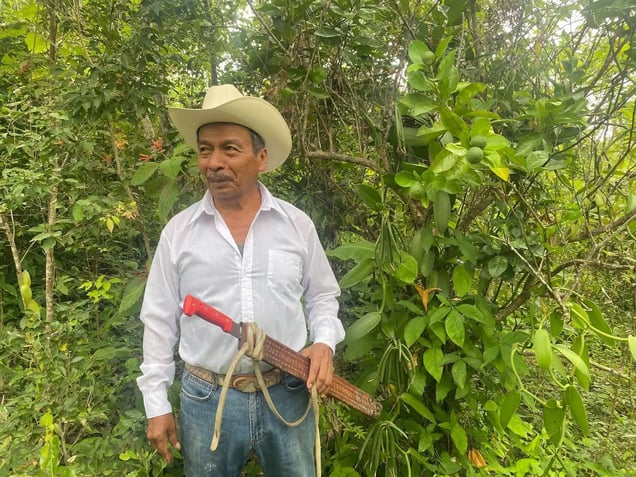
José Cortéz stands in front of a vanilla plant on his farm in Papantla. (Nathaniel Parish Flannery)
Centuries ago, the Totonaco people used the vanilla in perfumes and medicines and for sacred rituals. The Totonacos were conquered in the 15th century by the Aztecs, who used vanilla to flavor chocolate and also wore amulets stuffed with the plant’s aromatic flower petals as necklaces.
It wasn’t until the 17th century that a commercial market emerged for vanilla, and local Totonacos began actively cultivating and collecting the plants’ fragrant bean pods for sale. The spice became a sensation with the Spanish, who conquered the Aztecs, and brought vanilla back to Europe.
A major problem then, as it remains today: the difficulty of growing the crop.
- Unlike other cash crops, vanilla is not suited for growth on large monocrop plantations. It grows best in smaller plots, mixed among other plants.
- Growing, cultivating, and preparing vanilla for sale is a hands-on process that can take a full year.
Cortéz plants seedlings, guides their growth, and hand-pollinates the flowers in the spring and prunes and fertilizes the vanilla vines in the summers.
At the end of the year he clips the six- to nine-inch-long vanilla pods, which are filled with thousands of tiny black seeds. Then there’s a month-long drying process under the sun. No part of the endeavor has been mechanized.
Timing is key. In the spring, the flowers bloom for just one day. If Cortéz doesn’t find them in time, he misses out on valuable vanilla pods.
Today, less than 1% of the world’s vanilla comes from flowers similar to those grown by Cortéz, with the vast majority coming from an artificial process that, according to Smithsonian magazine, has been around since the 19th century and leads to less flavorful vanilla.
Even in the niche market for real vanilla, Mexico contributes a tiny — and dwindling — share. In the 1930s, the country was responsible for roughly half of the world’s vanilla exports. It recently ranked 35th, far behind Madagascar, which led the world by exporting $619m in 2021, according to the Observatory of Economic Complexity.
Simple economics are one reason for vanilla’s decline in Mexico. The crop is largely ignored as a tool for rural economic development because farmers have other options that are easier to grow and pack onto trucks going north to mass-market commercial importers in the US.
Berries, tomatoes, and avocados each represent billion-dollar Mexican export industries.
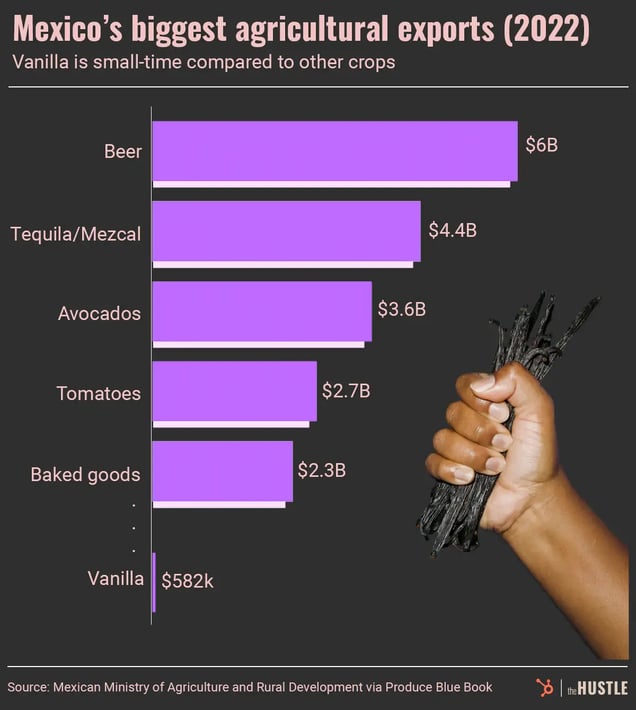
The Hustle
As for vanilla? Exports officially totaled ~$582k in 2022, although that’s likely an undercount. Nadja Shumann, cofounder of the Veracruz exporting company Vanilla Trade, told The Hustle her company alone exported enough vanilla to nearly reach that figure and suggests the national number is at least 10x higher.
For vanilla farmers like Cortéz, who number ~1.5k in Papantla, vanilla is a lifeline.
- Most of them mix vanilla plants among other crops on their land and use vanilla sales — sold to exporters like Shumann — as a supplemental source of undeclared cash income. (In Mexico, the majority of businesses are small, informal, and off the books.)
- Cortéz can earn as much as $28k annually from his crop, enough to put him in the top decile of income earners in Veracruz (half of all households in Mexico make less than $7.8k per year).
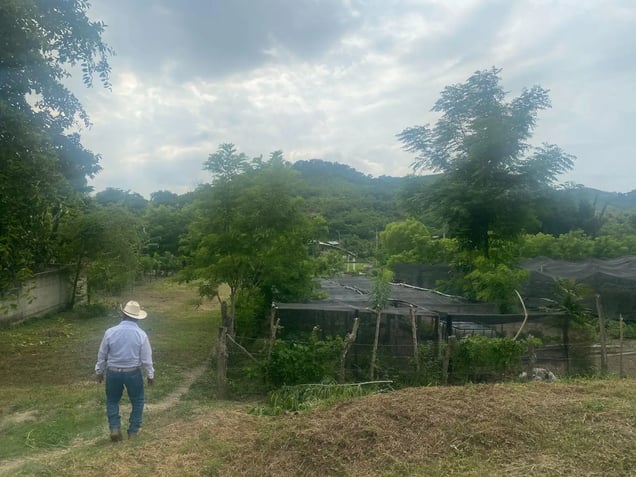
José Cortéz walks near a garden of seedlings near his home. (Nathaniel Parish Flannery)
That makes vanilla vital for many local farmers but dispensable to big businesses and the Mexican government. As Veracruz reels from murders, kidnappings, and cartel violence, vanilla theft is simply not a priority for anyone who could stop it.
A ‘uniquely corrupt’ government
How often does vanilla get stolen from local farmers in Mexico?
- A few years ago, Mexican academics gathered to discuss the problem at the Campesino Forum in Mexico City, where professor Juan Carlos Guzmán Salas estimated 80% of the country’s growers had experienced theft.
- In April, the mayor of Gutierrez Zamora, a town 30 minutes from Papantla, warned that during the months of July and August, local growers report up to four vanilla robberies every week.
“At night, there’s nobody at the plantation,” Juan Salazar, a 43-year-old vanilla grower and exporter in Papantla, told The Hustle. “People steal. It’s frustrating. It’s a [lot of] work to take care of it, and it can be lost in one night to robbery.”
It hasn’t been nearly as easy to catch the culprits. Despite vanilla thefts being well-documented anecdotally, farmers and Mexican legal experts say municipal police and state prosecutors have done little to investigate.
“Veracruz is quite uniquely corrupt, even by the standards of a Mexican state,” said Stephen Woodman, a Mexico-based organized crime researcher at Advanced Intelligence Solutions. “It’s run by political bosses, caciques. Veracruz is a hotbed for all sorts of brazen links between organized crime and municipal officials.”
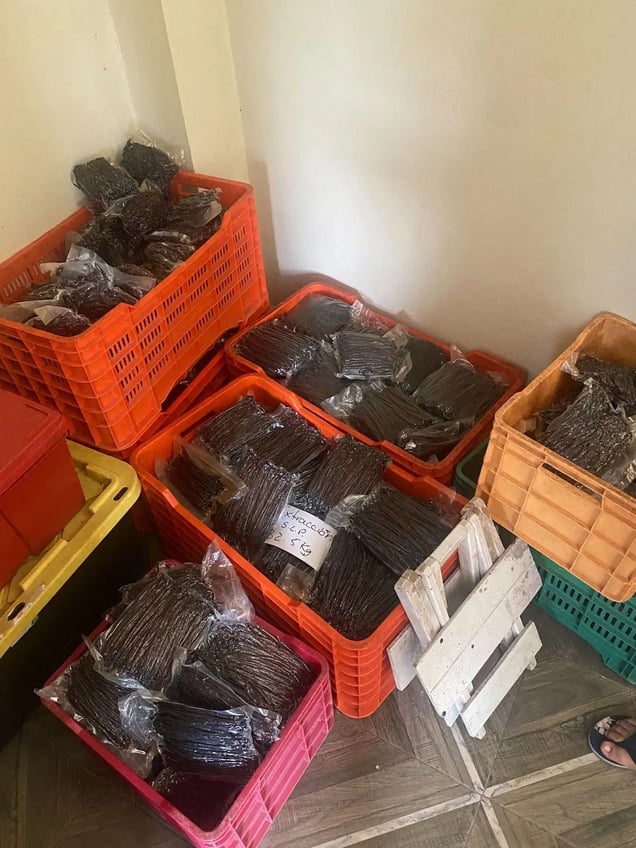
Dried vanilla with an export value of ~$74k ready to be packed for export inside a vanilla drying facility in Papantla, Veracruz. (Nathaniel Parish Flannery)
Over the last few years, thieves connected to larger organized crime groups in Veracruz have stolen billions of dollars of fuel from Mexico’s state-owned oil company, Pemex. In 2018, the state’s former governor, Javier Duarte, was sentenced to nine years in prison for racketeering and money laundering.
Guzmán Salas has publicly warned that vanilla thieves could have direct relationships with organized crime syndicates and corrupt business groups that aggregate, process, and export dried vanilla pods and extracts. Cartels have already inserted themselves in the lime and avocado trade.
But with few arrests for vanilla theft, there’s a serious lack of evidence.
Local farmers guess that thefts are carried out by local, low-level criminals rather than by outside organized crime groups.
“The people who steal are locals. It’s small scale. With vanilla, a neighbor can rob you. But it’s not armed robbery,” Salazar said.
Either way, farmers face the consequences. One Veracruz-based grower told The Hustle that it’s taken a toll on the crop’s quality and value, as the fear of theft drives farmers to harvest as soon as possible and buyers to reduce prices.
Can Mexico grow its vanilla industry?
To combat theft, one local politician in Veracruz has proposed creating a registry of producers to certify the legal provenance of vanilla bought and sold in the state.
It’s similar to a tactic in Madagascar, where producers have reduced the incentive for theft by “branding” their individual pods with producer-specific numbers that provide a paper trail for sourcing.
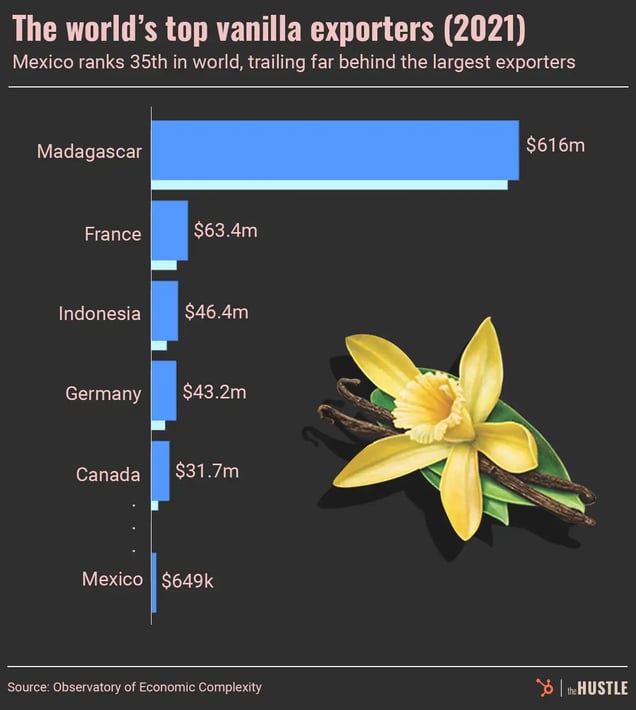
The Hustle
Despite theft concerns, supporters of Mexican vanilla are bullish on the crop’s revival.
- Mexico’s Ministry of Agriculture calculates that if producers used improved cultivation methods, the country could export 234 tonnes of vanilla worth ~$8 million by 2030 while using basically the same amount of land. That’s roughly 20x more than the baseline estimate of what Shumann, the exporter with Vanilla Trade, believes the country exports today.
- Savvy producers like Lizbeth Jiménez, the 33-year-old owner of Cosecha Totonaca in Papantla, have started selling directly to international buyers, bypassing traditional aggregators and processors who act as middlemen.
Jiménez’s farm produces around 150 pounds of dried vanilla annually, which she can sell for as much as $19k. She also dries, processes, and sells green vanilla that she buys wholesale from local farmers.
Her biggest sale last year was a bulk order for 440 pounds, which she sold for just over $69k.
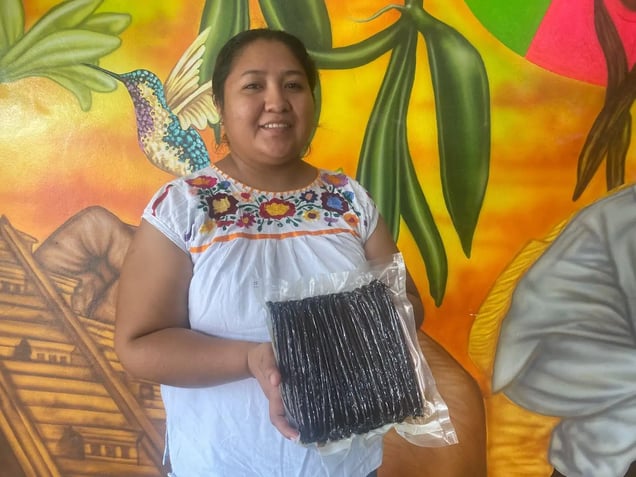
Lizbeth Jiménez, the owner of Cosecha Totonaca, a Papantla company that dries, processes, and exports vanilla, holds up a small package of dried vanilla worth $468. (Nathaniel Parish Flannery)
But many farmers are wary of growing the industry. Securing business loans and developing modern, intensive growing techniques would require producers to create formal businesses, hire accountants, and pay taxes on their income.
Then there’s the crime problem: Producers must already contend with theft. More output might draw scrutiny from cartels, a la the lime and avocado industries.
However it shakes out, Cortéz knows he’ll continue working on his farm, just like his parents and grandparents and the generations before them — harvesting with a shotgun nearby.
“I’ll never stop planting vanilla,” he said. “It’s my culture and it’s my main source of income.”

